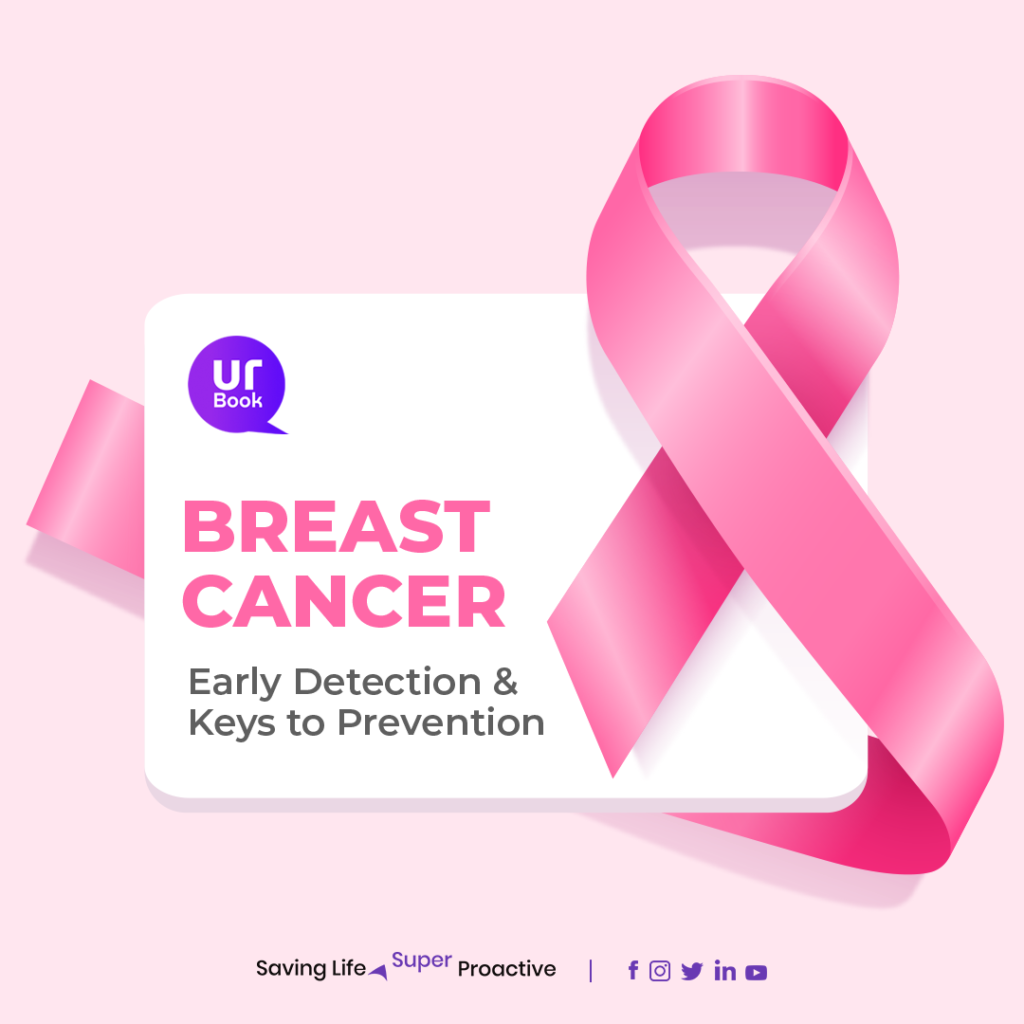
Breast cancer is the 5th leading cause of death in women globally. In India, about 1,50,000 new cases of breast cancer are diagnosed yearly. It has become the most common cancer affecting women in our country.
More alarmingly, it is happening at a younger age. Compared to the West, Indian women were diagnosed with breast cancer a decade earlier. So, this October, Breast Cancer Awareness Month, we wanted to take the time and talk about breast cancer early detection.
Breast Cancer Early Detection Can Be Lifesaving
The 5-year survival rate of breast cancer is the highest as long as it is detected early when it is still localised. If treatment is given promptly, the survival rate can be as high as 99%. However, at an early stage, breast cancer shows no or few symptoms. It makes knowing simple facts about early breast cancer detection crucial.
Breast Cancer Screening
Regular screenings are important because most breast cancers are survivable if detected early. Screening means a test or an exam to look for cancer in women who don’t have any symptoms. There are 3 screening tools that help with breast cancer early detection:
- Self-Test
How to perform a breast self-exam?
The easiest and quickest way to catch this cancer is a self-exam, and every woman should know how to perform it.
- Stand in front of a mirror and look for any unexplained change in color, shape, size, or symmetry of your breasts.
- Raise one arm and then use the pads of your fingers to examine a breast, moving from the nipple and upwards. A neat trick is to think of it as a clock with 12 points. So, you start from the nipple, move towards 1, and then come back to the nipple and move your finger toward point 2. Repeat for all 12 points.
- Your movements should be firm but light, feeling for any painful spots, lumps, or knots.
- Mammograms
The most frequent screening procedure for breast cancer is mammography.
A mammogram is an image of the breast’s inside. Tumors that are too tiny to feel may be discovered via mammography.
- MRI (Magnetic Resonance Inamging)
Women with a high risk of breast cancer may be screened using MRI.
A magnet, radio waves, and a computer are used in the MRI method to create a number of intricate images of various bodily parts. Another name for this process is nuclear magnetic resonance imaging (NMRI). The woman is not exposed to radiation during the MRI because it doesn’t use any x-rays.
- Other Screening Procedures-
Your physician may advice other screening methods depending upon the risk factors and post initial screening to assess the chances of breast cancer, these tests may include Thermography, tissue sampling, biopsies etc.
What are the symptoms of breast cancer?
The most common sign is a lump in the breast or underarm. That said, a lump does not automatically mean you have breast cancer; another condition may be causing it.
So, take a moment before you panic. Pause, and use QurBook to go through all the breast cancer-related FAQs. Then schedule an appointment with your doctor for a clinical exam.
Other symptoms of breast cancer include:
- Unexplained changes to the size or shape of the breast
- The nipple is inverted, puckered, irritated or has an ulcer
- Breast skin is swollen, dimpled or irritated
- Pain in the breast or nipple
- Discharge besides milk
- Red, thick or scaly skin
Ways To Reduce Your Risk Of Breast Cancer
Knowledge is the strongest armour against breast cancer. Knowing what to look for to detect it early is good practice. However, every woman can do more by making simple lifestyle changes to reduce their risk of breast cancer.
Although the precise cause of breast cancer is still shrouded in mystery, some factors increase its risk. Age, genetics, and family history are three that are beyond your control. But the lifestyle factors – weight, alcohol and physical activity – are within your purview.
1. Aim for a healthy weight
There is enough evidence that points to obesity as increasing the risk of postmenopausal breast cancer. Excess weight around the stomach and waist puts you at a higher risk than the hips and thighs. So, find the right balance between your diet and workout regimen to maintain a healthy weight for your body type. A good starting point is to concentrate on not gaining more weight. From there, move on to actively shedding weight.
2. Have a workout routine
Exercising has not one but two advantages. First, it supports your goal of sustaining a healthy weight. Second, it reduced the risk of breast cancer further. Both moderate to vigorous physical activities help, so pick what you love – jogging, swimming, aerobics, cycling, or fast-paced sports. Work out at least 5 days a week. If you are opting for moderate activity, aim for an hour a day. For higher-intensity activities, half an hour will do.
3. Limit your alcohol intake
Alcohol increases your risk of breast cancer, and the risk heightens the more you drink. Women who have one alcoholic drink a day increase their risk by 7% to 10% compared with those who don’t drink. Women who have 2 to 3 drinks a day are at a 20% higher risk.
The first choice should be to avoid alcohol, and if not, then limit your intake. Since alcohol, specifically sugar-filled cocktails, is bursting with calories, drinking regularly can also hamper your goal of maintaining a healthy weight.
2 More Steps For Breast Cancer Early Detection
Lifestyle changes are the keys to preventing breast cancer. Early detection is the key to beating breast cancer. So, every woman who’s reading this, we urge you to get a yearly mammogram if you have crossed the 40-year mark. That is regardless of whether you have symptoms or not.
For those with a family history of breast cancer, genetic testing can go a long way in identifying the risk. It is a simple blood test that looks for the BRCA gene mutation. While it does not give you the complete picture, it can make you more aware of the need for screening and preventative steps.
Remember, awareness along with early breast cancer detection can save your life!
